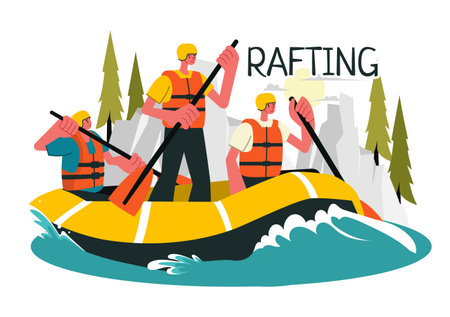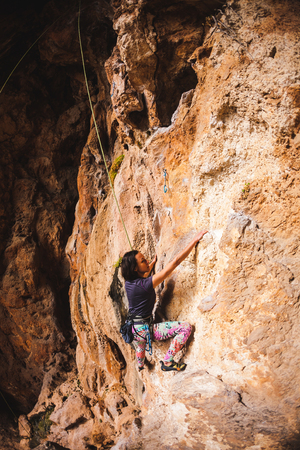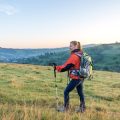1. Why Permits Matter for Backpacking in the U.S.
Backpacking across America’s wild places is an unforgettable adventure, but before you hit the trail, there’s one thing you can’t overlook: permits. If you’re new to backpacking in the U.S., you might wonder why you need a permit just to walk in the woods. The truth is, permit systems are designed to help protect both the land and your experience as a visitor.
Conservation: Protecting Wild Spaces
Many of America’s most iconic wilderness areas—like Yosemite, the Grand Canyon, or the Pacific Crest Trail—are fragile environments. Permit systems help limit the number of people on popular trails, reducing human impact on plants, wildlife, and water sources. This way, these beautiful landscapes stay healthy for future generations of adventurers.
How Permits Help Conservation
| Benefit | Example |
|---|---|
| Limits overcrowding | Only a set number of hikers allowed per day in Yosemites backcountry |
| Reduces trail erosion | Controlled access prevents overused trails from degrading |
| Protects wildlife habitat | Minimizes disturbance to sensitive species in places like Glacier National Park |
Safety: Keeping Hikers Accountable
Permits aren’t just about protecting nature—they also keep you safe. When you register for a permit, rangers know who is out in the backcountry and when they’re expected back. In case of emergencies like wildfires or storms, rescue teams can respond more efficiently if they know who is on which trail.
Permit Safety Features
- Helps rangers track visitors during emergencies
- Makes it easier to provide trail updates and alerts
- Ensures hikers have basic safety knowledge (some permits require brief orientations)
Visitor Experience: Enjoying Solitude and Scenery
No one wants to reach a remote alpine lake only to find it crowded with tents. By limiting numbers through permits, parks make sure everyone gets a real wilderness experience. It keeps campsites peaceful and lets you enjoy the scenery without bumping into crowds at every turn.
Top Reasons Permits Improve Your Trip:
- Avoids overcrowded campsites and trails
- Makes it easier to find quiet spots for camping and stargazing
- Keeps iconic destinations special for all visitors
If you plan on backpacking in any major U.S. wilderness area, understanding how and why permit systems work is key to making your trip both enjoyable and responsible.
2. Understanding Different Types of Backpacking Permits
When planning a backpacking trip in the U.S., understanding the different permit systems is essential. Each national park, forest, and wilderness area may use its own system to manage crowds, protect natural resources, and ensure everyone has a great outdoor experience. Here’s a breakdown of the main types of backpacking permits you’ll encounter—and how each works.
First-Come, First-Served Permits
This system operates exactly as it sounds: permits are given out in the order people arrive or request them. Many trailheads and backcountry areas use this method for part or all of their permit quota. You might have to show up early at a ranger station or visitor center, sometimes even camping out overnight during busy seasons. This option is best for flexible travelers who can adapt their plans if spots fill up quickly.
Reservation Systems
Many popular trails and parks allow you to reserve your permit online ahead of time, often months before your trip. Reservation systems help guarantee your spot on specific dates, making trip planning easier. However, these permits can sell out fast—especially for iconic hikes like the John Muir Trail or the Grand Canyon’s corridor trails.
Lottery-Based Permits
For especially high-demand areas where more people want to visit than there are available slots, lotteries are used. You submit an application during a set window (sometimes months in advance), then wait to see if you’re selected at random. Examples include The Wave in Arizona and Yosemite’s Half Dome cables. Winning a lottery doesn’t always guarantee flexibility, so be ready to adjust your schedule if needed.
Quick Comparison of Permit Systems
| Permit System | How It Works | Where You’ll Find It | Best For |
|---|---|---|---|
| First-Come, First-Served | Pick up permits in person; availability is limited daily | Many National Forests, some National Parks & Wilderness Areas | Spontaneous trips; flexible schedules |
| Reservation | Book online for specific dates far in advance | Popular National Parks (Yosemite, Grand Canyon) | Planners; guaranteed entry on chosen dates |
| Lottery-Based | Enter a draw; winners get permits for select days | The Wave, Half Dome, Enchantments | Buckets-list hikes; willing to try their luck |
Special Considerations by Land Type
National Parks
Parks like Yosemite, Zion, and Glacier usually require permits for overnight backcountry trips—and often use reservation or lottery systems due to high demand.
National Forests & Wilderness Areas
You’ll find more first-come, first-served options here, but some areas with sensitive ecosystems (like California’s Desolation Wilderness) may still use quotas or reservations.
Tips for Navigating Permit Systems:
- Check official websites: Rules change frequently—always verify details before your trip.
- Have backup dates or locations: Flexibility increases your chances of getting a permit.
- Set reminders: Reservations and lotteries open months ahead—set calendar alerts so you don’t miss out!
The right permit system for your adventure depends on where you want to go and how much flexibility you have with timing. Understanding these basics will make planning your next backpacking trip much smoother!

3. How to Apply for Backpacking Permits
Applying for backpacking permits in the U.S. can seem overwhelming at first, but it’s pretty straightforward once you know where to look and what steps to take. Here’s a step-by-step guide to help you navigate the process and increase your chances of securing that coveted permit.
Step 1: Determine If You Need a Permit
Before anything else, check if your destination requires a backpacking permit. Many popular national parks, wilderness areas, and state parks require permits for overnight trips. Visit the official website of the area you plan to explore or search for “[Park Name] backpacking permit.”
Step 2: Find the Right Permit Portal
The majority of federal lands use online portals to handle permit applications. Here’s a quick overview:
| Agency/Area | Main Permit Portal |
|---|---|
| National Parks (e.g., Yosemite, Grand Canyon) | Recreation.gov |
| Bureau of Land Management (BLM) | Recreation.gov |
| U.S. Forest Service Wilderness Areas | Varies (often Recreation.gov) |
| State Parks | State-specific websites (e.g., California State Parks) |
| Other Local Agencies | Check the specific agency’s website |
Step 3: Know Your Dates and Group Size
Permits are often limited and issued based on entry date and group size. Have alternate dates ready in case your first choice is unavailable, and make sure everyone in your party is committed before applying.
Pro Tip:
If possible, avoid holiday weekends and peak season dates for better chances at snagging a permit!
Step 4: Create an Account on the Permit Portal
You’ll need an account on Recreation.gov or the relevant state website. Set this up ahead of time so you’re ready when permits become available—some sell out within minutes!
Step 5: Complete the Application Carefully
When you’re ready to apply:
- Select your preferred trailhead or route.
- Enter your planned itinerary and group size.
- Add any required vehicle information or emergency contacts.
- Double-check all details—mistakes can lead to rejected applications.
Tips for Success:
- Have backup dates/routes prepared.
- If allowed, apply as soon as the application window opens (sometimes early morning local time).
- Read all rules about changes and cancellations before submitting.
- If applying by phone or mail (still required in some areas), call ahead to confirm details.
Step 6: Pay Fees and Confirm Your Permit
Most systems require a non-refundable fee when you submit your application. Once approved, you’ll receive a confirmation email—save this! Print it out or download it to your phone, as many rangers will ask to see proof of your permit on the trail.
Quick Reference Table: Common Permit Portals & Where to Apply
| Location Example | Main Website/Portal |
|---|---|
| PCT (Pacific Crest Trail) | PCTA.org Permits Page |
| Sierra Nevada Wilderness Areas (CA) | Recreation.gov |
| Canyonlands National Park (UT) | Recreation.gov |
| NJ State Parks (NJ) | NJ State Parks Website |
| Minnesota State Parks (MN) | MN DNR Reservations Page |
Your Next Steps
The key to getting a backpacking permit in the U.S. is starting early, being flexible with your plans, and paying close attention to each agency’s requirements. With these steps, you’ll be ready to hit America’s trails with confidence!
4. Pro Tips for Scoring High-Demand Permits
Insider Strategies for Landing Coveted Permits
Popular backpacking routes like The John Muir Trail, Enchantments, or the Grand Canyon Rim-to-Rim attract thousands of hopeful hikers each year. Because demand far outstrips supply, scoring a permit can feel tougher than summiting a fourteener! Here’s how you can maximize your odds:
Timing Is Everything
- Know Your Windows: Most high-demand permits use lotteries or open at a set time—often months in advance. Mark those dates on your calendar and be ready to log on the moment reservations go live.
- Set Reminders: Use your phone or email reminders so you don’t miss application deadlines. Some systems open at midnight Eastern Time!
Increase Your Flexibility
- Be Open With Dates: The more flexible you are with start dates and trip length, the better your chances.
- Try Shoulder Seasons: Consider hiking in early spring or late fall when fewer people apply (but check weather and trail conditions first).
Apply as a Group (or Solo)
- Group Size Matters: Sometimes smaller groups have better odds, while other trails allocate more spots to larger groups. Check park-specific rules before applying.
- Solo Advantage: Many lottery systems find it easier to slot in solo hikers, so don’t hesitate to go it alone if you’re up for the adventure!
Create Multiple Opportunities
- Apply for Several Dates/Trails: Some systems let you list alternate routes or dates—use this to your advantage.
- Have Friends Apply Too: If allowed, have everyone in your group submit an application (just make sure only one accepts if multiple win).
Utilize Waitlists and Cancellations
| Permit System | Waitlist/Cancellation Policy |
|---|---|
| NPS Recreation.gov | Canceled permits often become available online—check daily! |
| PCTA JMT Lottery | No official waitlist; monitor for last-minute openings. |
| NPS Yosemite Wilderness Permit | Walk-up permits released the day before at ranger stations. |
| NPS Grand Canyon Backcountry Office | Email cancellation notifications available; call for updates. |
If You Don’t Get a Permit—Don’t Give Up!
- Try Walk-Up Permits: Many parks hold back some permits for walk-ups issued the day before or even same-day at ranger stations. Arrive early and bring backup options.
- Look for Alternative Routes: Sometimes lesser-known trails offer similar scenery with much less competition for permits.
- Join Guided Trips: Some outfitters secure their own permit quotas; joining a guided group could be your ticket in.
The competition is real, but with these pro tips and a little persistence, you’ll up your odds of landing that bucket-list hike!
5. Essential Resources and Tools for Backpackers
When planning a backpacking trip in the U.S., having the right tools at your fingertips can make all the difference. From securing permits to staying updated on trail conditions, these resources will help you navigate the process with confidence. Below is a curated list of apps, websites, and official sources every backpacker should know about.
Top Apps for Backpackers
| App Name | Main Features | Available On |
|---|---|---|
| Recreation.gov | Permit applications, campsite reservations, lottery entries for popular trails | iOS, Android, Web |
| AllTrails | Trail maps, user reviews, GPS tracking, current trail conditions | iOS, Android, Web |
| Gaia GPS | Offline maps, route planning, real-time weather updates | iOS, Android, Web |
| Caltopo | Custom topographic maps, offline downloads, trip planning tools | iOS, Android, Web |
| National Park Service App | Park alerts, visitor info, permit details for all national parks | iOS, Android |
Essential Websites for Permits and Planning
- Recreation.gov: The go-to portal for federal land permits (including national parks and forests), lotteries for popular hikes like The Wave or Mt. Whitney, and campground bookings.
- US Forest Service (USFS): Official information on forest regulations, fire restrictions, and wilderness permits.
- National Park Service (NPS): Find up-to-date rules on backcountry permits and park-specific requirements.
- Wilderness Connect: Comprehensive database of designated wilderness areas with links to permit requirements and management agencies.
- Bureau of Land Management (BLM): Info on dispersed camping rules and special use permits for BLM-managed lands.
- National Weather Service: Check forecasts before heading out to remote locations.
Official Sources for Regulatory Updates & Alerts
- NPS & USFS Social Media: Follow your destination’s official accounts on X (Twitter), Facebook, or Instagram for real-time alerts about closures or permit changes.
- Email Newsletters: Many national parks and forests offer newsletters—sign up to get timely updates about application deadlines or new permit systems.
- Local Ranger Stations: Contact them directly by phone or stop by in person before your trip; rangers often know about last-minute trail conditions or changes not yet posted online.
Quick Tips for Using These Tools Effectively:
- Create accounts in advance on major platforms like Recreation.gov to save time during high-demand permit releases.
- Enable push notifications from relevant apps to stay informed about sudden changes while you’re out in the backcountry.
- If your route crosses multiple jurisdictions (like moving from a national forest into a national park), double-check each agency’s website for specific requirements.
- Keen to join group trips or ask questions? Try forums like Backpacker Forums, Reddit’s r/CampingandHiking, or local Facebook hiking groups for peer advice and current insights.
The right digital resources will streamline every part of your backpacking adventure—from pre-trip research and permit applications to staying safe and legal while exploring America’s wildest places.

